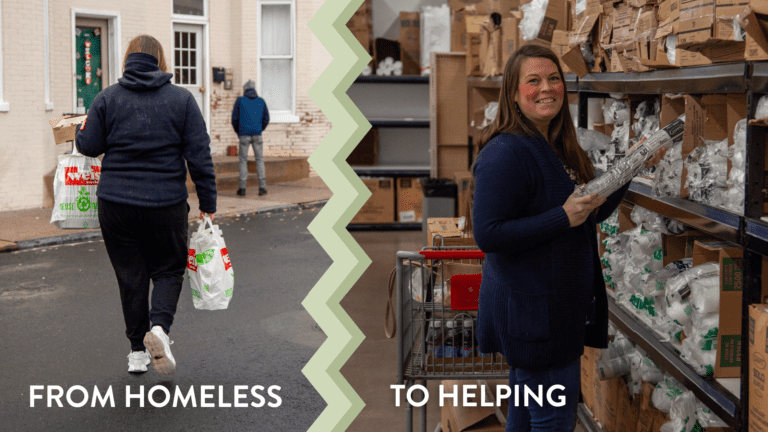It’s officially fall, which means most of us have thoughts of candy, pumpkin pie, turkey, ham, potatoes, and more on our brains (or stomachs). In fact, some of us may even be preparing our “stretchy pants” to wear as we anticipate overindulging ourselves on all of the food we undoubtedly will consume.
With so much food available over the holidays, it’s hard to fathom that there are many families and children that will have nothing or very little to eat.
Children are the future, and the fact that so many are going without the proper nourishment they need to grow into bright individuals is something that the volunteers at Blessings of Hope are trying to fix. With over 1,900 registered volunteers, Blessings of Hope is privileged to be able to provide families within our central Pennsylvania community with boxes of food. Sadly, there are still millions of other children in the United States that are facing hunger.
How many kids are going hungry in the U.S.?
To first understand childhood hunger, you have to know how the United States Department of Agriculture (USDA) defines someone (or a family) as “hungry.” The USDA does not actually measure the number of people that are hungry but instead determines how food secure homes are via four different levels: high food security, marginal food security, low food security, and very low food security.
When a household is food insecure, it means they answered “yes” to three or more questions on a survey that determined they were “at times unable to acquire adequate food for one or more household members because they had insufficient money and other resources for food.”
With that in mind, know that—according to the USDA—2.9 million households with children were food insecure at times during 2017. That’s approximately 12 million children that faced food insecurity in their homes.
What causes childhood hunger?
Household food security and childhood hunger are affected by several immeasurable factors, but one factor that can be correlated to the problem is insufficient money.
Low-income families are, predictably, the most prominent demographic facing hunger problems in the U.S. According to the federal poverty level that’s set by the United States Department of Health and Human Services, to be considered under the poverty line in 2019, a family of four would have to make $25,750 or less.
Being under the poverty line qualifies families to apply for specific federal nutrition programs that can help with meals, but children often still suffer due to that low income. Just because a family can afford food, it doesn’t mean they can provide enough to fill hungry, growing stomachs, or that they can afford anything nutritious.
How can childhood hunger impact kids?
When children go hungry or suffer from food insecurity, this can completely alter their quality of life. There are certain programs in most schools that offer free breakfast and discounted lunches to students, but what happens in the summer or over the holidays? Here are a few of the issues that can arise from childhood hunger.
Developmental Impairment
It’s no secret that maintaining a nutritious and well-balanced diet is essential to having good health, but that is even more true for children. When a child doesn’t receive enough food or a healthy meal in his or her early stages of life, there can be “health implications that carry through into adulthood.” Issues such as poor growth, obesity, bad oral health, and asthma are only a few of the health problems that can result from poor nutrition.
Increased Risk of Childhood Obesity
If children aren’t getting enough food, the question is, why is obesity such a problem? When money is tight, most families aren’t going to purchase a bushel of fresh apples for the week—that’s not a meal, and the food prices are too high. Instead, they’ll turn to overly processed foods containing high amounts of fat and salt that will last over the course of several days. A few frozen pizzas are sadly going to be cheaper than buying fresh fruits and veggies to make a full, healthy meal. Plus, add in cycles of overeating and food deprivation, and you’ve got even unhealthier eating habits that can lead to weight gain.
Increased Risk of Educational Difficulties
When children go to school hungry or don’t grow up with the proper nutrition, they’re more likely to “experience developmental impairments in areas like language and motor skills.” Kids that are sitting in class thinking about food aren’t focusing on their education, and this could possibly cause them to repeat grades in those critical early years of education. Even if low-income children have eaten, not having proper nutrition could leave them feeling tired, unfocused, and even irritable around their peers.
Increased Risk of Social and Behavioral Problems
If you’ve ever been in a sour or lethargic mood due to lack of food, imagine how a smaller child’s body feels over the course of a few days, weeks, or even months in this state. A child can become stressed or depressed when they don’t receive a nutritious meal, which can lead to possible social and other behavioral problems. Also, when a child suffers from a lack of household food security, they may feel ashamed that they get free breakfast or reduced lunch, leading to emotional problems among their peers.
Where Blessings of Hope Steps In
No one wants to see a child go hungry, which is why Blessings of Hope is working to battle childhood hunger among families in need. We use food as a tool and our love of the Lord to partner with various ministries and local businesses to distribute an average of 25,000 meals per day to local families in South Central Pa.
Our food distribution warehouse is set up to allow large food distributors to efficiently donate any excess food products to our cause, where we break it down into manageable portions for organizations to distribute. Between our ministry partnerships, our Truckloads of Hope program, and our Hands of Hope program, we only hope to continue to grow our efforts of feeding the hungry.
How You Can Help Us
Fighting childhood hunger can start with you! At Blessings of Hope, we depend on the generosity and hard work of all of our volunteers to help us provide food to the community. Volunteers help us pack food boxes, maintain truck equipment, drive trucks, help at fundraiser events, with outreach, shelf stocking, cleanup, and more!
If volunteering isn’t for you, don’t worry—any small monetary contribution you can make goes a long way. A few dollars may not seem like it would help, but 70 percent of our operating income actually comes from individual donors like you! Those small donations add up, and together, you can help Blessings of Hope give hope to those in need.




